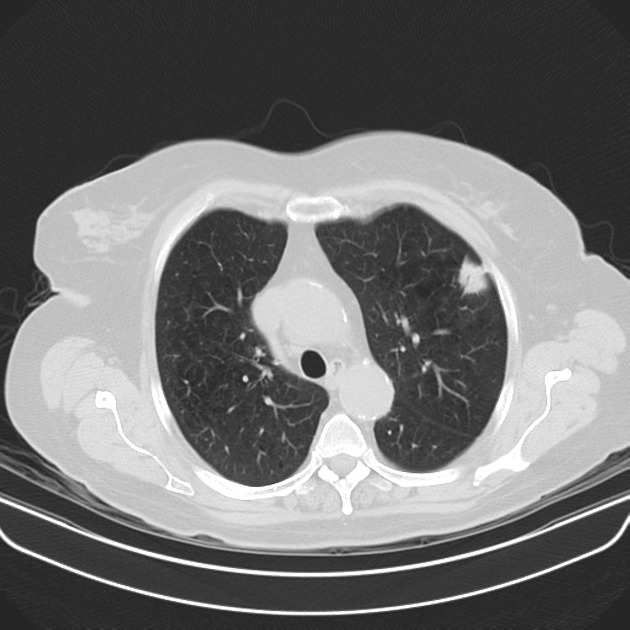minimally invasive adenocarcinoma of the lung



Minimally invasive adenocarcinoma (MIA) of the lung is a relatively new category in the classification for adenocarcinoma of the lung. Lesions that fall into this category refer to small solitary adenocarcinomas <3 cm with either pure lepidic growth or predominant lepidic growth with ≤5 mm of stromal invasion.
Epidemiology
There is no significant gender predilection, unlike other lung cancer types which are more prevalent in men.
Pathology
Minimally invasive adenocarcinomas of the lung are localized adenocarcinomas measuring ≤3 cm and demonstrating either pure lepidic or predominant lepidic growth pattern, with neoplastic cells along the alveolar structures and ≤5 mm of stromal invasion . These lesions should not show necrosis, lymphatic, vascular, or pleural invasion.
Three histopathological subtypes are recognized :
- non-mucinous: by far the most common subtype
- mucinous: goblet cell (mucus-secreting), often multicentric, rare
- mixed
Similar to the adenocarcinoma in situ, minimally invasive adenocarcinoma of the lung cannot be securely diagnosed without entire histologic sampling of the tumor .
Radiographic features
Nuclear medicine
FDG PET-CT
Minimally invasive adenocarcinomas may be associated with PET false-negative results, particularly when the lesions are small. FDG PET-CT is recommended when assessing subsolid ground-glass lung lesions that have a solid component measuring more than 8 mm .
Treatment and prognosis
Patients with minimally invasive adenocarcinoma of the lung have near 100% disease-specific survival when they are completely resected . Chemotherapy and radiotherapy are treatment alternatives, particularly for those patients that are not surgical candidates.
History and etymology
The entity formerly known as bronchoalveolar carcinoma was first described by Malassez in 1876, as a bilateral, multinodular form of malignant lung tumor .
The shifting terminology of non-invasive adenocarcinoma reflects both an increased utilization of immunohistochemical testing, as well as advances in personalized cancer treatment. Beginning with the 1999 World Health Organization guidelines, there has been an attempt to isolate purely non-invasive and minimally-invasive adenocarcinoma from more advanced adenocarcinoma, due to uniquely favorable prognosis in the former . Prior to the 2011 IASLC/ATS/ERS update , various forms of invasive disease remained lumped into the BAC category. Thus, scrapping the BAC classification was intended to further remove ambiguity.
Siehe auch:

